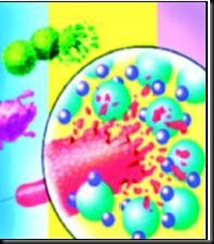The man who led the privately funded project to sequence the human genome, is someone who likes to mix business with pleasure. And for a geneticist whose passion is sailing, there can be few more satisfying ways of doing so than sampling genes in the Sargasso sea, near Bermuda. When Dr Venter ran his samples through his newly developed method for sequencing the DNA of an entire environment, some 1.2m new genes turned up from an estimated 1,800 species of microbe![]() previously unknown to science.
previously unknown to science.
 Such newly discovered genes are the raw material for the infant, but rapidly developing field that makes useful chemicals via genetically modified organisms. It is part of what is known as industrial biotechnology, where cells from animals, plants and bacteria are used to generate industrially useful products.
Such newly discovered genes are the raw material for the infant, but rapidly developing field that makes useful chemicals via genetically modified organisms. It is part of what is known as industrial biotechnology, where cells from animals, plants and bacteria are used to generate industrially useful products.
Finding a gene, though, is only the first step towards a product of commercial interest. According to Philippe Soucaille, chief scientific officer of a company called Metabolic Explorer, based in France, his firm is working with a database of all the biochemical pathways it can get its hands on and a computer model of the metabolism of a bacterium called Escherichia coli.
Given a starting material and an endproduct, Metabolic Explorer's system will assemble the best set of pathways and then work out how to fit them into E. coli, and say which existing E. coli pathways should be deleted. It will also identify potential biochemical bottlenecks where enzymes might need modifying to speed things up. Thus the company can pick-and-mix biochemical pathways from different organisms and put them together in a single bacterium, as a computer programmer might assemble a piece of software from prewritten sub-routines. Once the pathways have been selected, and the new enzymes designed, it is just a question of adding the relevant genes to E. coli, removing the genes for the undesired pathways, and seeing whether the result lives up to expectations.
Source: TOI
No comments:
Post a Comment